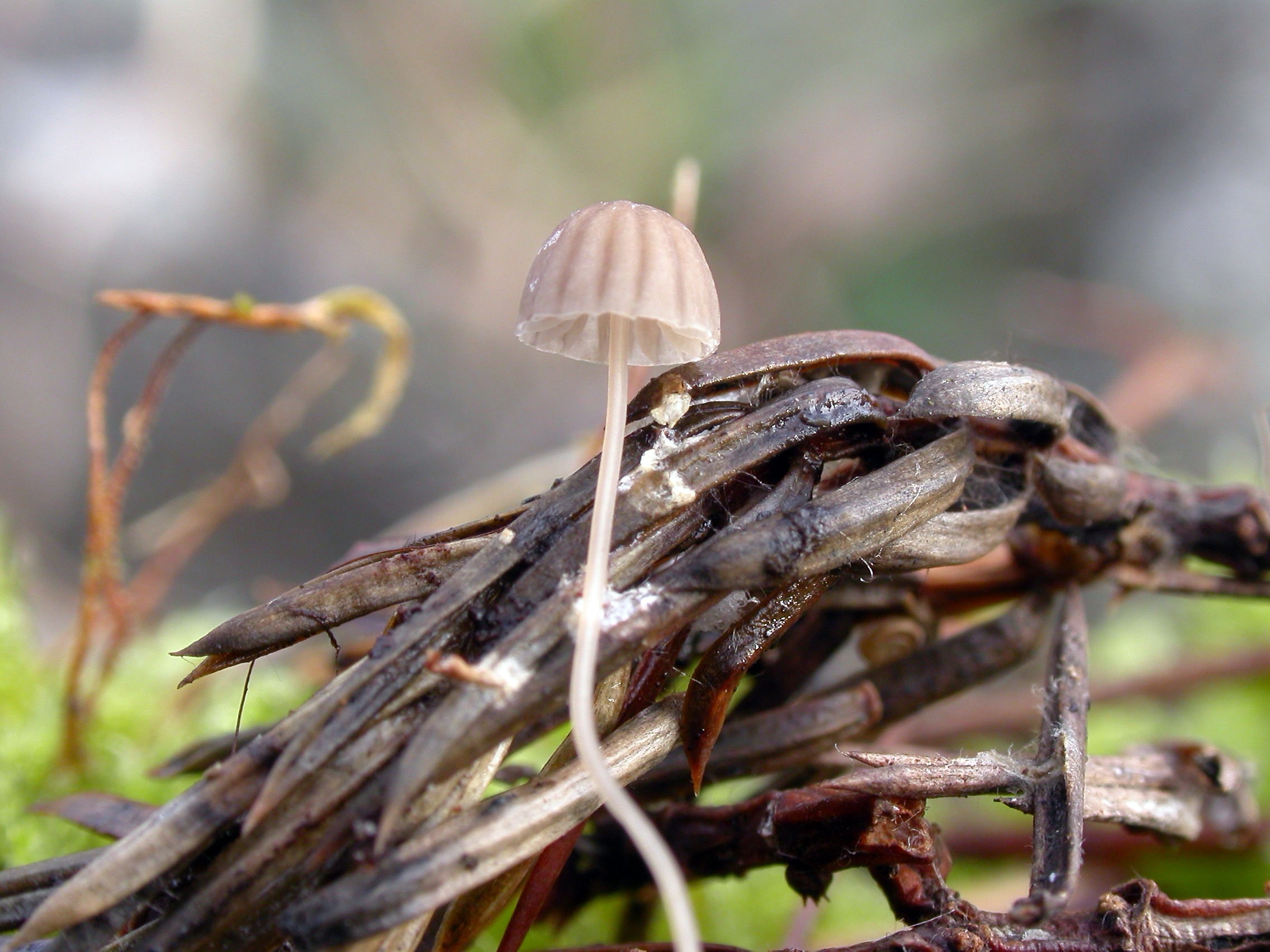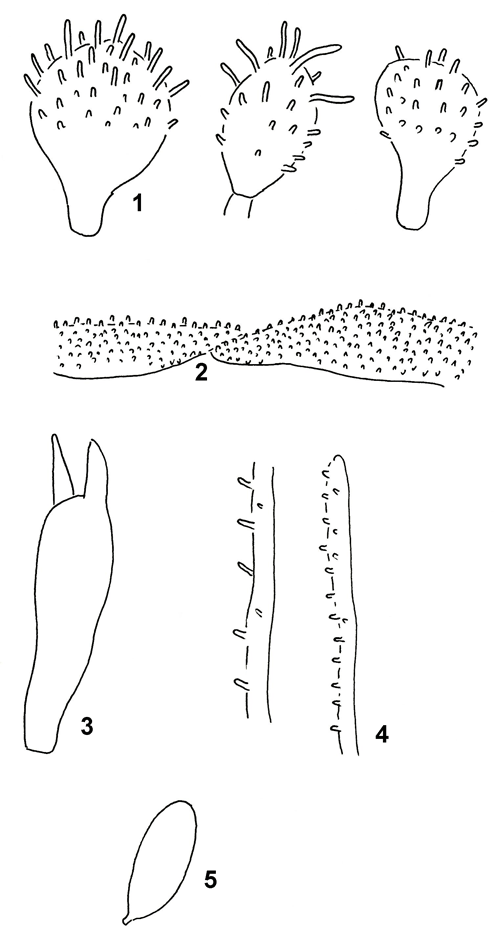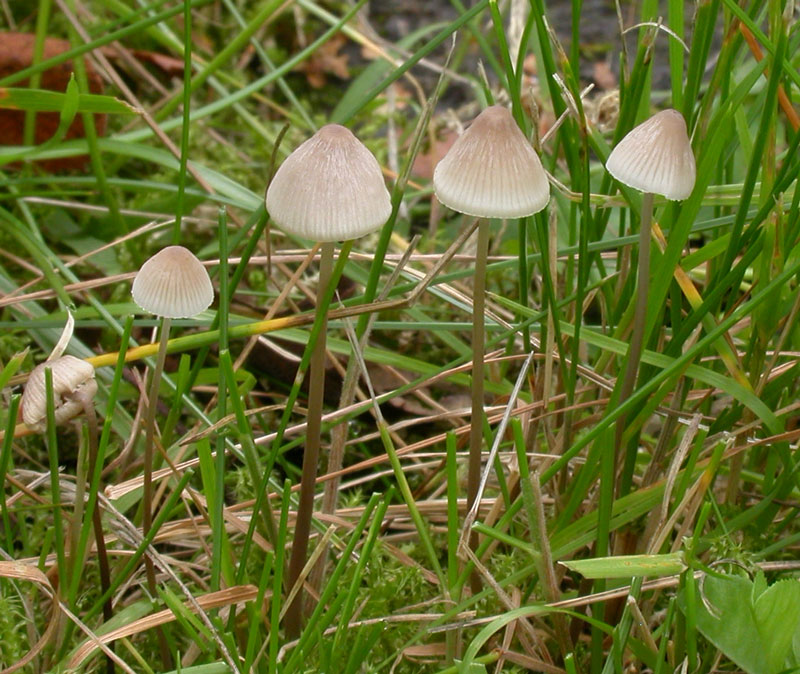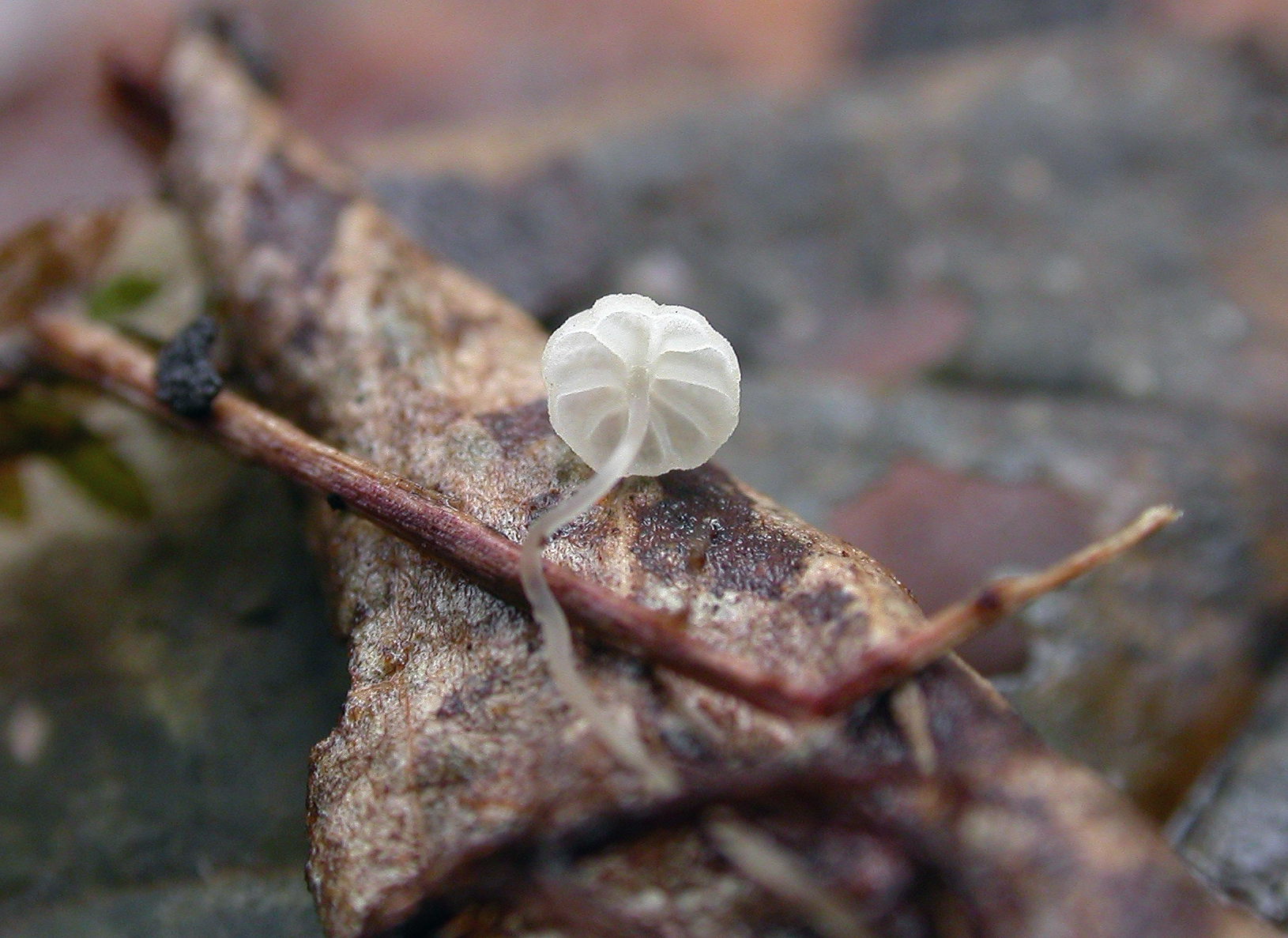Mycena mirata
Mycena mirata
Description
1. Cheilocystidia, 2. Hyphae of the pileipellis, 3. Basidium, 4. Hyphae of the cortical layer of the stem, 5. Spore.
Cap 2-7 mm across, hemispherical, conical to parabolical, ±depressed, or sometimes with a small papilla, sulcate, translucent-striate, pruinose, glabrescent, pale brown or grey-brown with a darker centre, or pale grey to whitish, sometimes entirely white. Gills 9-15(-17) reaching the stem, narrowly to more broadly adnate, with or without a short tooth, the edge convex, pale grey to whitish. Stem 10-35 x 0.2-0.5 mm, cylindrical, equal, entirely pruinose or minutely puberulous, glabrescent, shiny, whitish to grey above, greyish to dark brown below, sometimes entirely white, the base covered with or fastened to the substratum by long, white fibrils. Odour none. Basidia 18-24 x 6-9 µm, clavate, mostly 2-spored, but some 1-spored, with plump sterigmata up to 11 µm long. Spores 9.2-12.2 x 5.2-6.5 µm, Q = 1.3-2.5, Qav ˜ 1.9, elongated pip-shaped, almost cylindrical, amyloid. Cheilocystidia 16-20 x 9-14 µm, forming a sterile band, clavate to obpyriform, densely covered with cylindrical excrescences 2- 4 x 0.5-1 µm. Pleurocystidia absent. Lamellar trama dextrinoid. Hyphae of the pileipellis 2-10 µm wide, densely covered with warts or short cylindrical excrescences. Hyphae of the cortical layer of the stem diverticulate, fairly sparsely covered with cylindrical excrescences. Clamps present in all tissues.
Ecology and distribution
On moss-covered trunks of deciduous trees, or on fallen twigs and litter of both deciduous trees and coniferous trees. Often found under Juniperus communis. Summer to late autumn. Rare, but probably overlooked.



